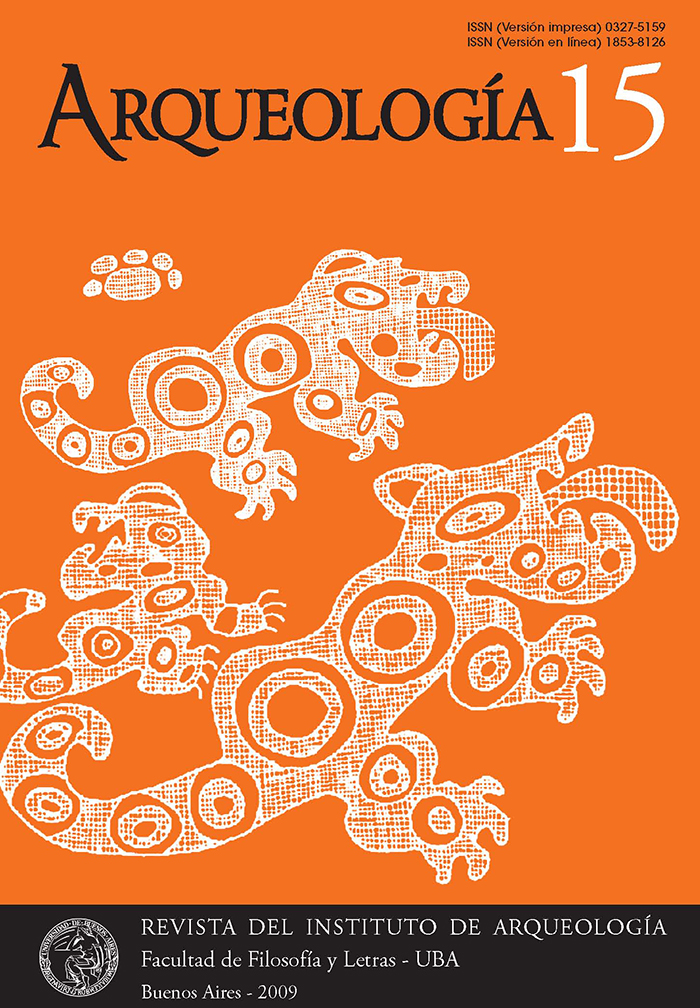How far to the West? Archaeology of the Peninsula Maipú’s isthmus (Lake San Martín, Santa Cruz province) in its regional context
Keywords:
Patagonia, Hunter Gatherers, Lithic Technology, Forest Edge, Logistical Use, Marginality
Abstract
The archaeological landscape of the Tar and San Martín Andean lake basins shows a high artifactual density related with lagoons and sand dunes of the isthmus of Maipú peninsula, which is located southwest of San Martin Lake forest edge. The lagoons exhibit the expedient use of a local available rock (green silicificated toba), while the sand dunes could be seen as an equipped space, with a higher artifactual diversity and evidences of utilized rocks. Technological information is introduced and compared with the one recovered at the east of the study area (south margin of the San Martin lake and Tar lake), where there is a very low proportion of artifacts manufactured in green silicificated toba. The results show the isthmus as the most western space redundantly utilized on a seasonal basis. It is also suggested that it could articulate logistical activities. These data exhibit the differences in the way and the intensity of the space used by hunter gatherer populations between the steppe and the forest. In this way, new information is added to the discussion of the hypothesis proposed by L. Borrero (2004) on the marginality of western spaces in relation with the eastern ones. Finally, the results are put into perspective with those obtained in other near Andean lake basins (Belgrano and Argentino).Downloads
Download data is not yet available.
How to Cite
Espinosa, S. L., Belardi, J. B., & Súnico, A. (1). How far to the West? Archaeology of the Peninsula Maipú’s isthmus (Lake San Martín, Santa Cruz province) in its regional context. Arqueología, 15, 187-205. Retrieved from http://revistascientificas.filo.uba.ar/index.php/Arqueologia/article/view/1704
Issue
Section
Articles
Authors who publish in this journal agree to the following conditions:
- Authors retain copyright and yield to the journal right of first publication with the work registered with attribution license Creative Commons, which allows third parties to use the published always mentioning the authorship of the work and first publication in this magazine.
- Authors can make other independent and additional contractual arrangements for the non-exclusive distribution of the version of the article published in this issue (p. Eg., Inclusion in an institutional repository or publish it in a book), provided that clearly indicate that the work was published for the first time in this magazine.
- It allows and encourages the author / s to publish their work online (eg institutional or personal pages) before and during the process of revision and publication, as it can lead to productive exchanges and greater and more rapid dissemination of work published (See The Effect of Open Access).





(1)13.png)






1.jpg)
1.jpg)


13.png)
1.png)


(1)1.png)









